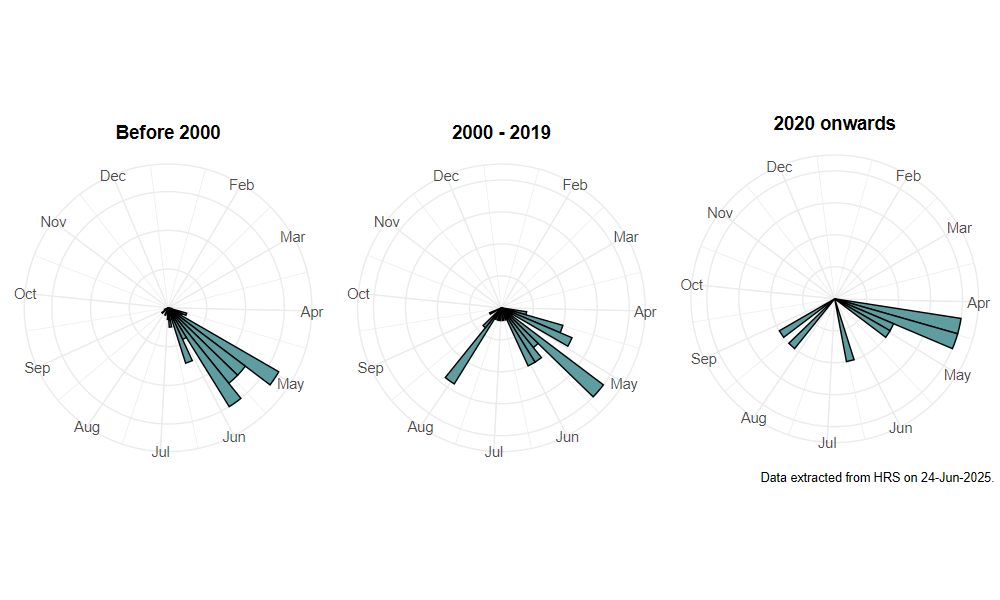Pipiza fasciata Meigen, 1822
Identification
Identification difficulty = 3. ![]()
![]() according to Ball & Morris, 20241
according to Ball & Morris, 20241
Synonymy
Pipiza fenestrata Meigen, 1822 in Stubbs & Falk (2002)2.
Biology
Larvae unlnown. Adults usually found along rides and edges of woodlands (both deciduous and coniferous) where it visits a range of flowers, but is perhaps more frequently found basking on sun-lit leaves.
Flight period
The following plots show the number of unique records per week excluding those reported to be of immature stages.

Distribution
A difficult species to identify - which probably limits the numbers of records. This species appears to have undergone a significant decline in occurrence over the past 35 years, some of which may be a result of changing recorder willingness to tackle difficult taxa.

Trends
The following plots show the Frescalo TFactor vs year and a map of the rescaled frequency (all records) for the species.